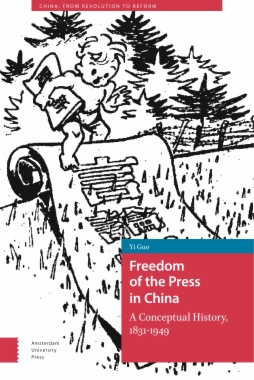Modern science is under the greatest and most successful attack in recent history. An industry of denial, abetted by news media and "info-tainment" broadcasters more interested in selling controversy than presenting facts, has duped half the American public into rejecting the facts of climate science—an overwhelming body of rigorously vetted scientific evidence showing that human-caused, carbon-based emissions are linked to warming the Earth. The industry of climate science denial is succeeding: public acceptance has declined even as the scientific evidence for global warming has increased. It is vital that the public understand how anti-science ideologues, pseudo-scientists, and non-scientists have bamboozled them. We cannot afford to get global warming wrong—yet we are, thanks to deniers and their methods.
The Inquisition of Climate Science is the first book to comprehensively take on the climate science denial movement and the deniers themselves, exposing their lack of credentials, their extensive industry funding, and their failure to provide any alternative theory to explain the observed evidence of warming. In this book, readers meet the most prominent deniers while dissecting their credentials, arguments, and lack of objectivity. James Lawrence Powell shows that the deniers use a wide variety of deceptive rhetorical techniques, many stretching back to ancient Greece. Carefully researched, fully referenced, and compellingly written, his book clearly reveals that the evidence of global warming is real and that an industry of denial has deceived the American public, putting them and their grandchildren at risk.
- Contents
- Preface
- Introduction
- 1. Science and Potemkin Science
- Never a Crisis
- A Political Movement
- A Cheap Tuxedo
- Better Than Scientists
- 2. Adventures in Denierland
- 3. The Evidence for Consensus
- Spam Filter
- Newton’s Second Law
- Polling Scientists
- An Extremely Pernicious Development
- 4. Discovery of Global Warming
- One of the Oldest Theories
- A Large-Scale Geophysical Experiment
- 5. The Greenhouse Effect: From Curiosity to Threat
- Models Predict Warming
- Globetrotters
- The Intergovernmental Panel on Climate Change
- 6. Global Warming: All You Really Need to Know in One Chart
- 7. Tobacco Tactics: The Scientist-Deniers
- All of Those People Are Wrong
- With All Due Respect, Dr. Michaels
- The $45 Million Man
- If Science Doesn’t Have Integrity
- Blue Marble
- Nuke Vietnam?
- Foot Soldier
- 8. Fear of State: The Nonscientists
- Aren’t You Embarrassed, Mr. Will?
- Once Again
- The Lomborg Deception
- Bed-Wetting, Messianic, Moaning-Minnies
- 9. Toxic Tanks
- Harry and Louise
- Tale from the Crypt
- Please Don’t Poop in My Salad
- Embarrassing General Marshall
- Push Down on the Accelerator
- 10. An Industry to Trust
- Most Profi table Company in History
- An Industry That Cannot Afford Denial
- 11. Balance as Bias: How the Media Missed “The Story of the Century”
- The Prestige Press
- Plumes of Smoke from China
- Carbongate
- End of Objectivity?
- Systemic Failure
- 12. Science Under Attack
- It’s the Sun, Ozone, Volcanoes, Sulfates
- Testosterone
- Watts Up with That?
- Slap Shot
- The Medieval Warm Period
- Do Climate Models Work?
- Did Global Warming End in 1998?
- Chicken or Egg?
- GRACE
- Tropospheric Cooling?
- 13. Greatest Hoax in History?
- Who’s to Blame? Liberals, of Course
- To Command Spring
- Funding Research
- Traitors
- 14. Climategate: Much Ado About Nothing
- One Million Words
- Innocent of All Charges
- Gates and More Gates
- 15. Anatomy of Denial
- To Roll Back Industrial Society
- 16. Escalating Tactics
- Monkey Trials
- Old Virginia Home
- 17. Earning Trust
- Appendix
- Notes
- Bibliography
- Acknowledgments
- Index

